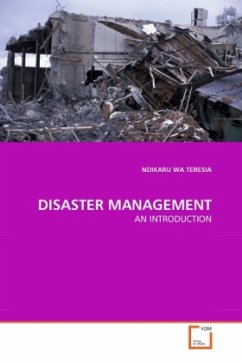This book provides a clear understanding of Disaster Management. Disaster Management activities are divided into four phases that require different types of organization and preparation. Mitigation is the initial phase. It should be considered long before a disaster occurs and includes activities aimed at reducing the probability of disaster occurrence. These are the activities designed to postpone or lessen the effects of a disaster. The second phase, preparedness, is like an insurance policy against disasters. Preparedness activities include planning for the most effective and efficient response to minimize damages. The third phase is response after the onset of a disaster. It provides emergency assistance for casualties including search and rescue, shelter and medical care. The fourth phase is recovery and the activities that continue immediately after the disaster. This book is resourceful to undergraduate and postgraduate students. Teachers, lecturers and social workers who are involved in educating communities about disaster preparedness and management will find this book useful in their work.
Bitte wählen Sie Ihr Anliegen aus.
Rechnungen
Retourenschein anfordern
Bestellstatus
Storno








